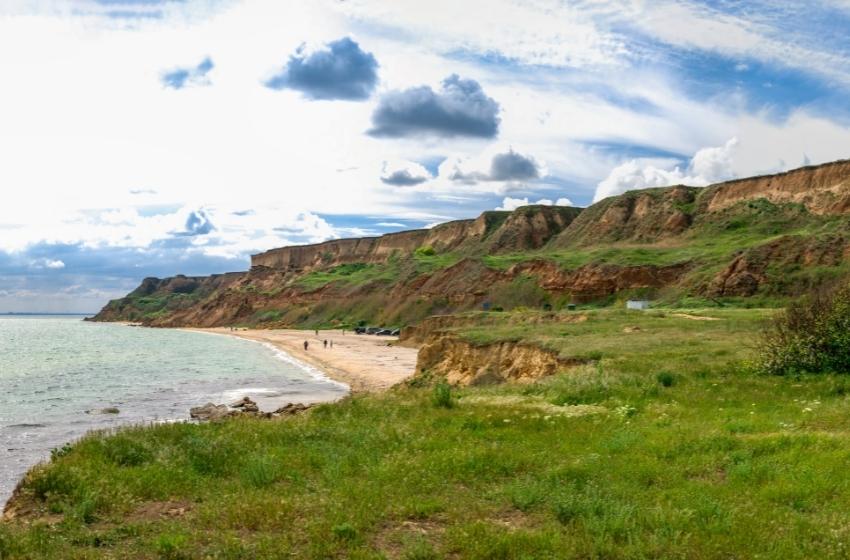Odessa region is located in the south-west of Ukraine. It borders in the east with Nikolaev, in the North - with the Kirovograd and Vinnitsa regions, in the West - with Moldova, in the South - with Romania, in the Southeast it is washed by the Black Sea.
The territory of the modern Odessa region has been inhabited since the late Paleolithic. The remains of settlements from the Mesolithic and Neolithic times, monuments of the Trypillian, Gumelnitsky and Usatov cultures were also found. A day of bronze is represented by monuments of cattle-breeding and agricultural cultures (in particular, the Yamnaya, Catacomb and Srubna cultural-historical community, the Sabatinovskaya and Belozerskaya cultures). From VII to III century. BC e. the owners of this territory were the Scythians, and from the II century. BC e. to the III century. n. e. - Sarmatians. In the VI century. BC That is, on the Black Sea coast, the Greeks began to establish colonies (including Tire and Nikoniy), which existed until the era of the Great Migration. In the III-IV centuries. the territory of the Odessa region is included in the zone of distribution of the Chernyakhov culture. Starting from the invasion of the Huns (end of the 4th century), nomadic Turkic peoples (Avars, Bulgarians, Pechenegs, Polovtsians) dominated the Black Sea steppes.
From the 1240s to the XIV century. the territory of the Odessa region belonged to the Golden Horde. At the end of the XIII century. On the ruins of ancient Tyra, the city of Akkerman (Belgorod) arose, which became an important trade center of the North-Western Black Sea region. At the end of the XIV century. Belgorod, along with all Budzhaka, went to the Moldavian principality, and the steppes to the east of the Dniester - to the Grand Duchy of Lithuania. At the end of the 15th - 1st third of the 16th century. Almost the entire territory of the modern Odessa region entered the possession of the Ottoman Empire (Ochakovsky-Silistrian eyalet).

After the Russo-Turkish war of 1787-1792, most of the territory of the modern region was ceded to the Russian Empire for the Yassy Peace Treaty. During 1797-1802 it was part of the Novorossiysk province, and from 1803 - in the Kherson province. Part of the territory of the region, annexed to the Russian Empire as a result of the Russian-Turkish war of 1806-1812, was part of the Bessarabian region, which from 1818 had an autonomous status, and after 1828 was annexed to the Novorossiysk General Governorship. At the end of the 18th century. Intensive settlement of the Black Sea region and the Budzhak steppe began. Numerous Bulgarian, Gagauz and German colonies appeared here.
In 1807, the Russian government authorised the creation of the Ust-Danube Cossack Army, which was liquidated in the same year, but restored in 1828 (and existed until 1868). The Southern part of Budzhak from the city of Izmail after the Crimean War went to the Moldavian principality. After the Russian-Turkish war of 1877-1878, this territory was returned to the Russian Empire.

Odessa region physical map with all limans
December 21, 1917 Odessa was declared a free city. From December 1917 to March 1918, the Southern part of the region (Budjak) was part of the Moldavian Democratic Republic. From January 1918 to March 1918 in the central part of the modern region was the puppet Odessa Soviet Republic. In March 1918, the Kingdom of Romania annexed the Moldavian Democratic Republic, and with it South Bessarabia.
In 1920, the Odessa province was formed, and two years later the Nikolaev province was annexed to it. During 1923-1930 there was the Odessa okrug, and during 1930-1932 - the Odessa region, subordinate directly to the republican center.
By the resolution of the All-Union Central Executive Committee of October 12, 1924 "On the formation of the Autonomous Moldavian SSR" from part of the territory of the Baltic and Odessa districts of the Odessa province and the Tulchin district of the Podolsk province, the Autonomous Moldavian Socialist Republic was formed as part of the Ukrainian SSR.
The Odessa region was formed by the decree of the 4th extraordinary session of the VUTSIK of February 9, 1932, its primary territory included the cities of Odessa, Zinovievsk (now. Kropyvnytskyi), Nikolaev, Kherson and 46 districts.
During World War II, the entire modern Odessa region was occupied by the Kingdom of Romania (October 1941 - August 26, 1944), while Budjak was included directly into the state territory of Romania as part of the governorship of Bessarabia, and the territory East of the Dniester - to Transnistria. In 1954, the Izmail region became part of the region.





















